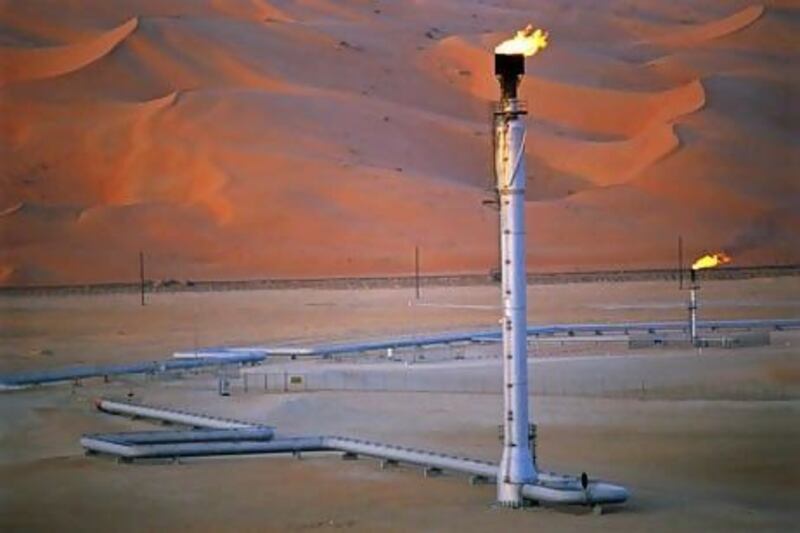Saudi Arabia has overtaken Russia as the world's biggest producer of oil for the first time in six years as the kingdom tries to compensate for declining Iranian exports and attempts to push crude prices lower.
Saudi production reached a 31-year high at 9.923 million barrels per day (bpd) in March, marginally more than Russia's 9.920 million bpd, according to data from the Joint Organisations Data Initiative (Jodi).
Opec's largest producer has increased production in response to sanctions and an embargo levelled on Iran, and has made repeated assurances it would use its spare capacity to keep the markets supplied. Yet its efforts to calm the oil markets and lower crude prices to levels palatable to a vulnerable world economy are hampered by the inability of other countries to increase their production and an anticipated rebound in demand.
"The kingdom has done its share of putting in place capacity and resources to sustain its operations," said Sadad Al Husseini, the owner and founder of Husseini Energy. "I don't see a matching effort by many of the other countries."
Ali Al Naimi, Saudi Arabia's oil minister, in January pledged to help bring Brent prices down to levels of about US$100 a barrel.
"If we were able as producers and consumers to average $100 I think the world economy would be in better shape," said Mr Naimi.
Crude prices surged at the beginning of the year over concerns about declining Iranian exports and a deteriorating security situation in the Gulf.
The Islamic Republic's refusal to abandon its controversial nuclear programme prompted the US and the European Union to impose a fourth round of sanctions on the Opec member, compounded by an EU embargo on Iranian oil.
It is estimated that the measures, which only fully come into effect in July, have succeeded in trimming exports by 500,000 bpd from last year's average of 2.2 million bpd. With a stated total production capacity of 12.5 million bpd, Saudi Arabia is the only country with significant spare capacity, and it has so far been able to compensate for the Iranian shortfall with ease.
Brent, the benchmark for oil traded into Europe, fell to about $107 a barrel last week after Iran and the West resumed talks and record Opec production bolstered inventories.
The outcome of renewed negotiations remains uncertain, however, and there are doubts over Saudi Arabia's ability to cover for Iran under any scenario. The data from Jodi, a research group that works under the auspices of the International Energy Forum in Riyadh, is at odds with the assessments of the International Energy Agency (IEA), an organisation representing the biggest consumer of oil.
IEA estimates put Saudi production at 10 million bpd since February, as Opec pumps a collective 31.85 million bpd, well above its self-imposed ceiling of 30 million bpd.
Russia, which is not part of Opec, disputes the Jodi figures, putting its own March production at 10.36 million bpd. With producers operating near maximum capacity, a failure of talks with Iran and the continued enforcement of sanctions would create strong pressures on prices to go up. An expected seasonal increase in demand later in the year would add to this pressure.
The IEA has cast doubt over the levels of spare capacity in Saudi Arabia, putting the total capacity at 11.88 million bpd, leaving less than 2 million bpd as spare capacity at current pumping levels.
"Whenever you operate an industry at 98 per cent of its capacity, then it becomes vulnerable to any disturbance," said Mr Al Husseini, who is also a former vice president of Saudi Aramco.
Apart from crude production, Saudi Arabia also increased the amount of diesel it uses domestically to generate electricity and desalinated water.
Diesel consumption rose by 45 per cent on the year in March to reach 377,000 bpd.
twitter: Follow and share our breaking business news. Follow us
iPad users can follow our twitterfeed via Flipboard - just search for Ind_Insights on the app.





